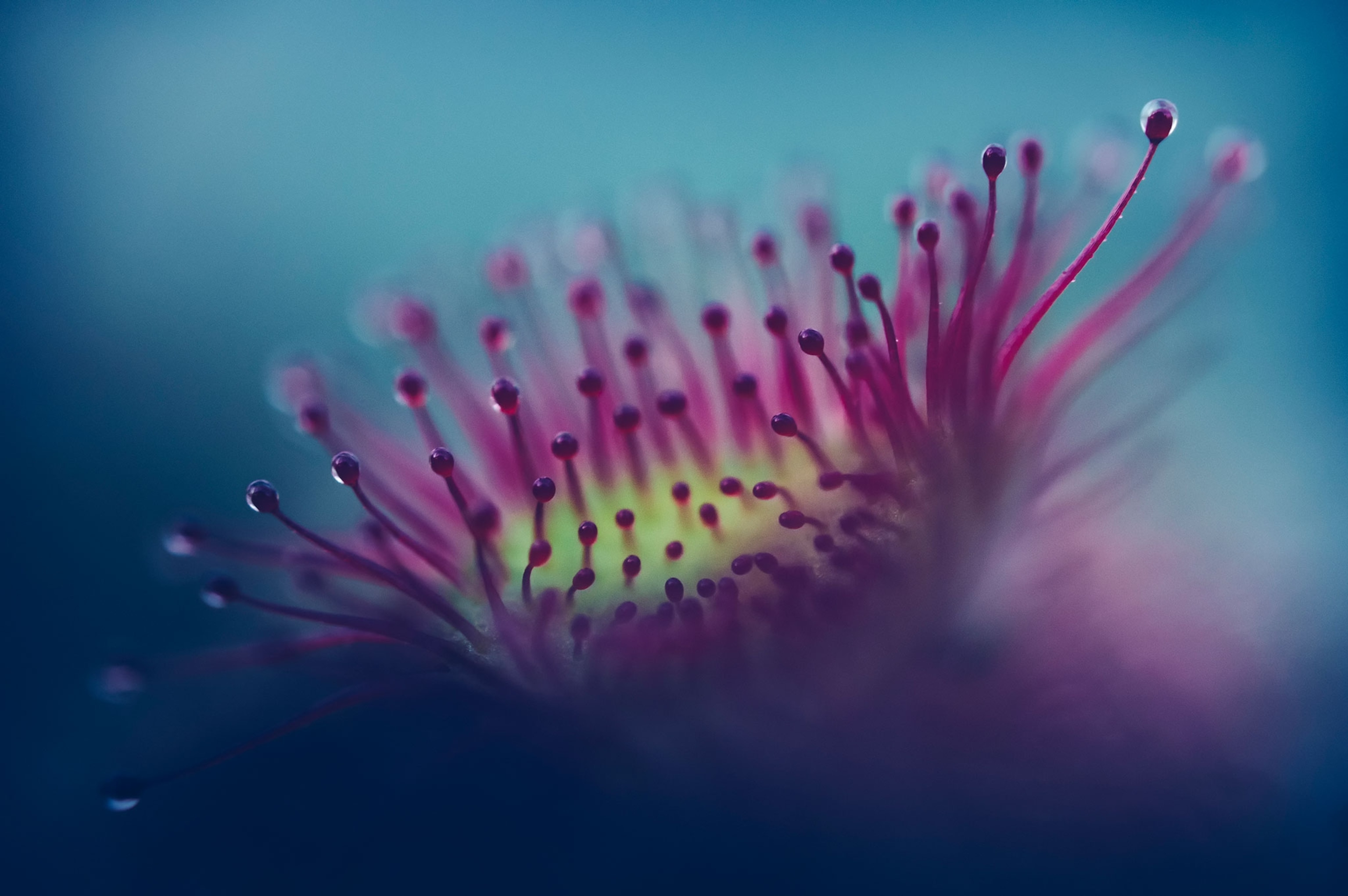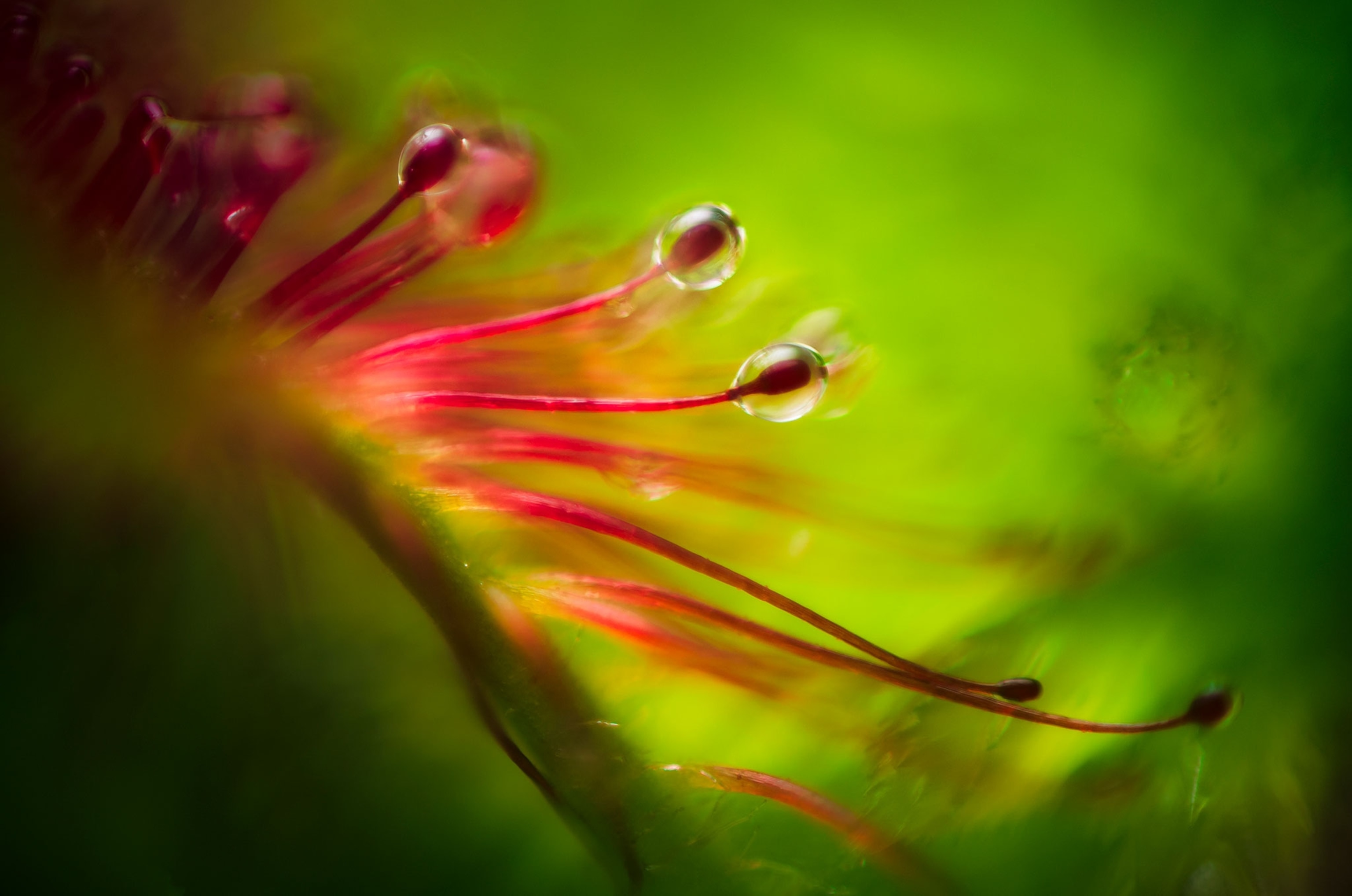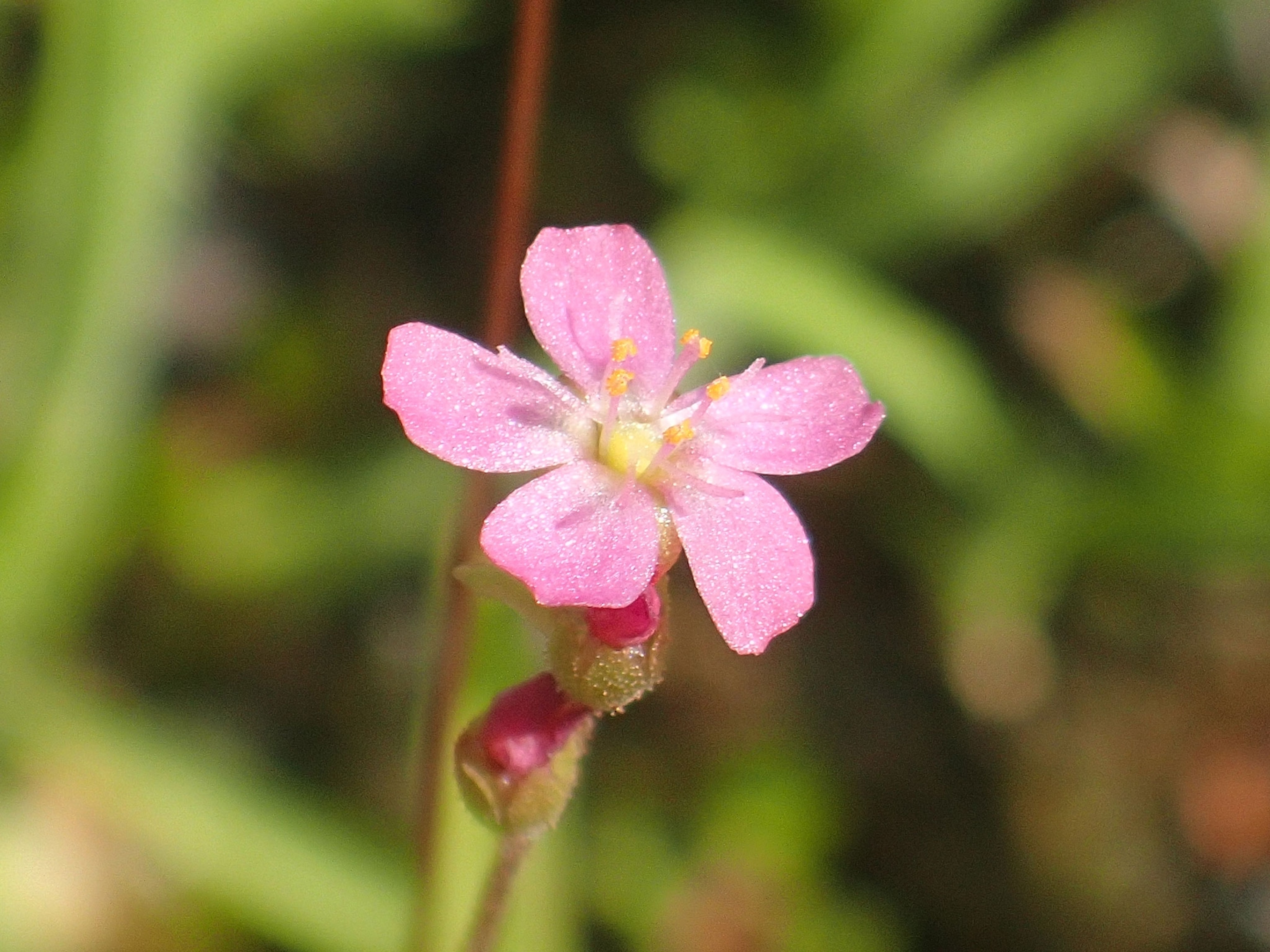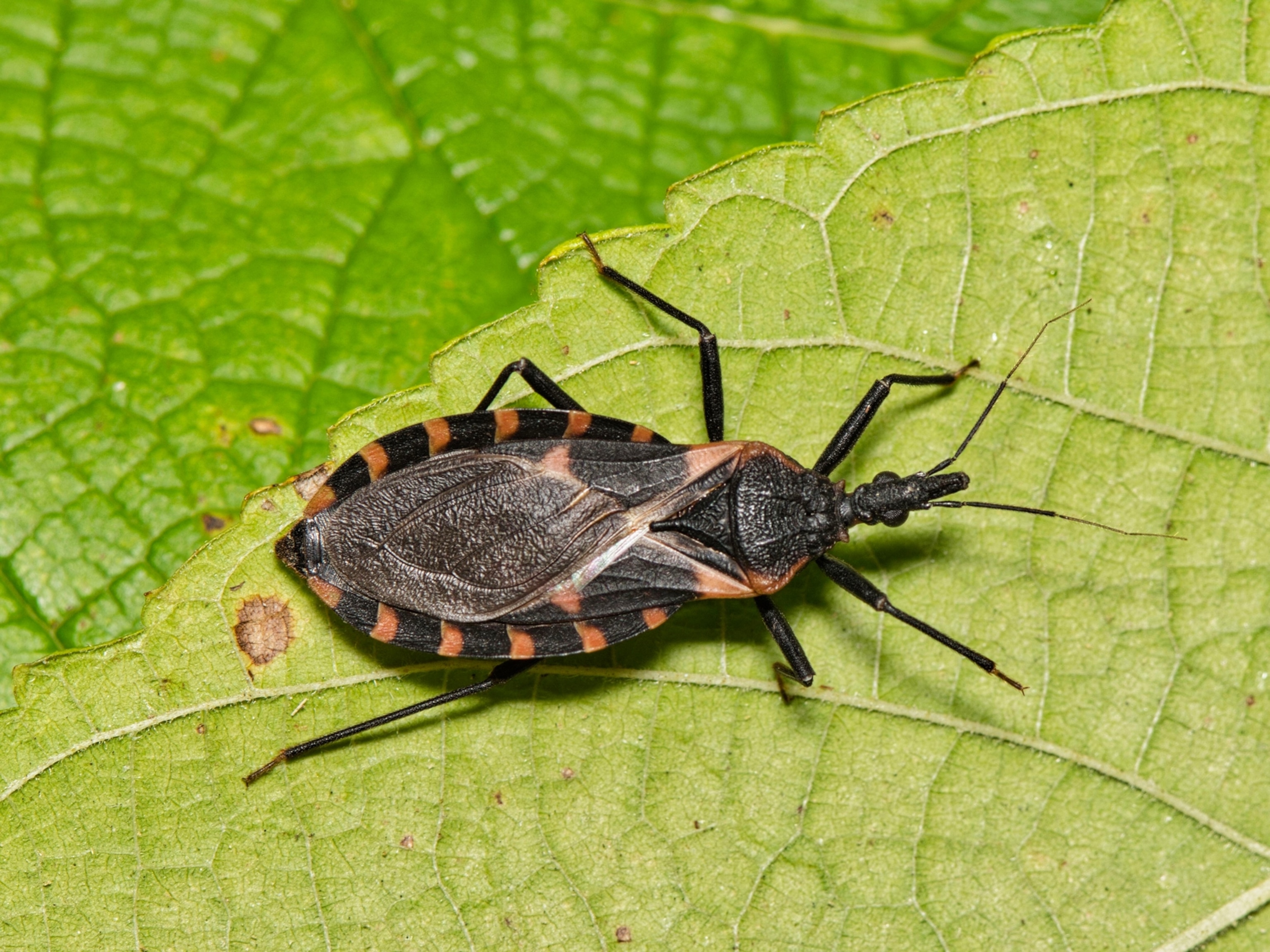Meat-Eating Plant Found Stealing Bugs From Its Neighbors
Sundews growing in a Japanese bog turned out to be far more devious than imagined.
Finding a sundew plant with a healthy supply of insect food may not seem suspicious. After all, carnivorous plants are famed for supplementing their diet with meat to compensate for nutrient-poor soil.
But there may be devious behavior going on behind the scenes. Some sundews growing in bogs in Japan steal insects lured by the flowers of neighboring plants, according to Kazuki Tagawa from Kyushu University in Fukuoka, Japan, and his colleagues.
It seems to be a case of kleptoparasitism, which has only previously been witnessed in animals, where food is acquired from another species with nothing offered in return. For instance, frigatebirds steal their meals from red-footed boobies.
“As far as we know, this phenomenon has not been observed before,” says Tagawa, whose team reports their findings in Ecological Research.
Problems With Pollination
The researchers investigated how two sundew species, Drosera makinoi and Drosera toyoakensis, attract prey. They looked at the role of the sundews’ own flowers, as well as those of plants close by, and compared the number of insects trapped when flowers from one or both types of plants were removed.
Surprisingly, the number of insects they caught depended on whether the surrounding non-carnivorous plants had blooms. That’s odd, since the non-carnivorous plants don’t benefit from associating with sundews, and instead are investing resources in their own flowers only to see potential pollinators become prey. (Find out how sundews also compete with spiders for prey.)
Meat-eating plants rely on insects for reproduction, too, so it’s not always an advantage to eat them. Many have evolved mechanisms to spare some prey, for example, by having traps that only function after the plant has flowered. The sundew species observed in this study, however, can make seeds from their own pollen.
“It’s better for them to trap pollinators and get more nutrients,” Tagawa says.
He and his colleagues plan to follow up to see if preying on pollinators is having a detrimental effect on the neighboring plants. (Read about sundews in Sweden that are getting “full” on nitrogen pollution.)
Joni Cook at Loughborough University in the U.K., who also studies the feeding habits of sundew plants, is interested in whether the plants are accessing more nutritious prey by thieving from others. If so, sundew survival might be affected by extreme weather and rising temperatures, which could reduce the number of pollinators their neighbors attract.
“The plants would have to adapt to these changes, otherwise it could potentially lead to local species extinctions,” Cook says.
Unexpected Flower Power
Sundews seem to be good at coming up with tricks that help them survive, though. Tagawa and his team also recently discovered that the flowers of some species close in response to physical contact.
“We had never heard of a plant that rapidly closes its flowers in response to touch,” says Tagawa, who first noticed the behavior while holding flower stalks during a photo session.

Other touch-sensitive plants are known to close their leaves, and while the flowers of some plants sometimes shut, they do so in response to environmental factors, such as low temperature or rising humidity. Such conditions signal rain or snow that could damage the fragile organs inside flowers.
Sundews are likely using the tactic to protect themselves from predators, particularly sundew plume moths. As they report in Plant Species Biology, the petals of Drosera tokaiensis and Drosera spatulate fold up within two to 10 minutes after parts of their stem, calyx, or closed flowers are pressed with tweezers.
The moths typically snack on sundew fruit before moving upward to eat the flower, so Tagawa thinks the blossoms close just fast enough to prevent an attack on the reproductive organs inside. In future tests, the researchers will examine the role of shutting flowers in greater detail.
“Flower closing has an obvious cost, since pollinators can’t visit flowers once they close,” Tagawa says. As with the thieving sundews, though, if the plants can self-pollinate, it may not be a concern.










